Introduction
This guide describes how to setup the ideal cycle time and the option there of. Ideal cycle time is necessary to calculate the performance aspect of oee.
Types of ideal cycle time
There are the following type of ideal cycle time:
- Unit-Product: This is the ideal cycle time, that represent the case where a unit has a different ideal cycle time than the rest of the units, for producing a specific product. For example: Line 1 is better(or worse) at producing car 1, then the rest of the lines. This type should be used when there is a specific ideal cycle time between a unit and a product.
- Product: This is the ideal cycle time, that represent the case where a product generally has a ideal cycle time. For example: Car 2 has a ideal cycle time of 86400 seconds(1 day) regardless of which unit it is produced in. This type should be used when a product as a specific ideal cycle time that is generally true.
- Unit: This is the ideal cycle time, that represent the case where a unit generally has a ideal cycle time. For example: Line 2 produce with a ideal cycle time of 86400 seconds(1 day) regardless of which product it is producing. This type should be used when you don't have one of the others, it is a fallback type.
- No ideal cycle time available: This is a system case, where none of the other types are available. Its ideal cycle time is 0.01 second, it is designed to give you a very poor performance, so you can see, that something is wrong and you are missing an ideal cycle time configuration. This is a safe guard and shouldn't happen.
Priority of the ideal cycle time
When oee is calculated the following priority is used to select which ideal cycle time type should be used:
- Unit-Product
- Product
- Unit
- No ideal cycle time available
Configure ideal cycle
Unit
You should always have a ideal cycle time configuration for all your units, this is your fallback configuration that prevents the use of No ideal cycle time available.
Go to the Configuration->Units page:

Select your unit:
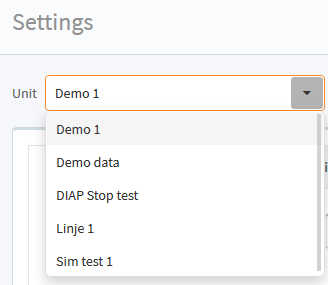
And select a Default ideal cycle time:

You can view the history of the Default ideal cycle time by clicking the History button:

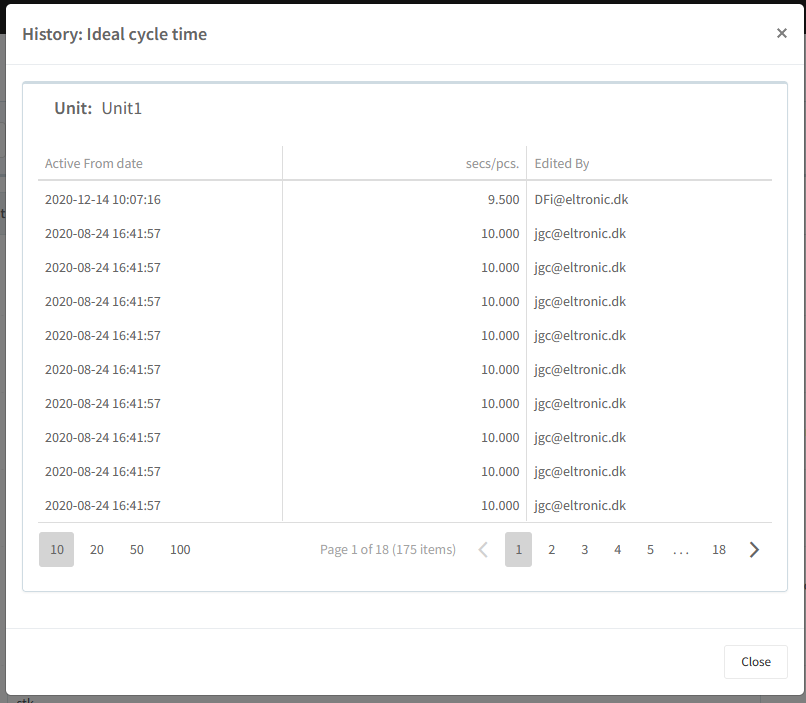
If you change the Default ideal cycle time within a hour of the last given Default ideal cycle time, then the system assumes that you made a type error and overwrites the last Default ideal cycle time. if more than a hour has passed a new entry will be made.
Product
You can have ideal cycle time configuration for a product specifically, unlike the unit case, this is not necessary, but it gives a more specific case, when the performance is calculated.
Go to the Configuration->Product page:
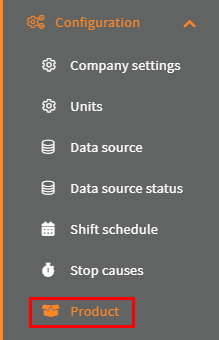
Create a new product if the product isn't in the Product table:

Or if the product is in the Product table, find it and edit it:
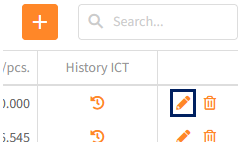
And select the ideal cycle time in the Ideal cycle time(sec) column:
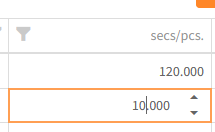
And click the Save button:

Just like Default ideal cycle time for a unit, you can view the ideal cycle time history for the product by clicking the List button under the History ICT column:


And if the ideal cycle time is updated within a hour, the last one get updated, else a new entry is created.
Unit-Product
This is the most specific case for the ideal cycle time, where you setup an ideal cycle time for the combination of a unit and a product. This is not necessary, but it gives the most specific cases, when the performance is calculated.
Go to the Configuration->Units page:

Select your unit:
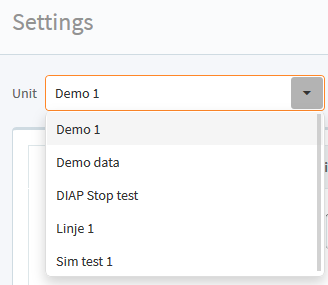
And click the Ideal cycle time tab:
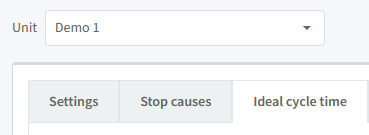

Select the product:

Select an ideal cycle time:
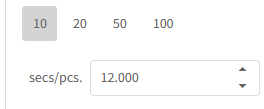
Last click the Add bottom:

If the product is in the table, click the Edit button to change its Ideal cycle time:

And select the ideal cycle time in the Ideal cycle time(sec) column:

Just like Default ideal cycle time for a unit, you can view the ideal cycle time history for the product by clicking the List button under the History ICT column:

And if the ideal cycle time is updated within a hour, the last one get updated, else a new entry is created.
Ideal cycle time configurations priority
As shown in Priority of the ideal cycle time the Unit-Product configuration is used first, then Product, then Unit and lastly No ideal cycle time available(You don't configure this one). This means that if a Unit-Product configuration exist for the selection of the ideal cycle time, then the Product and Unit configurations are ignored. If no Unit-Product configuration exist, then the Product configuration will be used and then the Unit configuration is ignored. If no Unit-Product and Product configurations exist, then the Unit configuration be used.
To sum up Ideal cycle time configurations priority:
- If you setup the Unit-Product configuration for a given product on a unit, it won't use the Product configuration for that product or the unit configuration for the unit.
- If you setup Product configuration for a given product, it won't use the unit configuration when that product is used.
Example of Ideal cycle time configuration priority
There are units "Line 1" and "Line 2", of products there are product "Car" and "computer". There is exist a Unit-Product ideal cycle time configuration between unit "Line 1" and product "Car", of Product ideal cycle time configurations there is one for both the product "Car" and "computer".
Now "Line 1" makes an order with product "Car". Here the Unit-Product ideal cycle time configuration is used between "Line 1" and product "Car", because the configuration combination exists.
Next "Line 1" makes a new order with product "computer". Here the Product ideal cycle time configuration is used, because there is a Product ideal cycle time configuration for "computer".
Last "Line 2" makes an order with product "Car". Here there is no Unit-Product ideal cycle time configuration between "Line 2" and product "Car", so the Product ideal cycle time configuration for "Car" is used.
